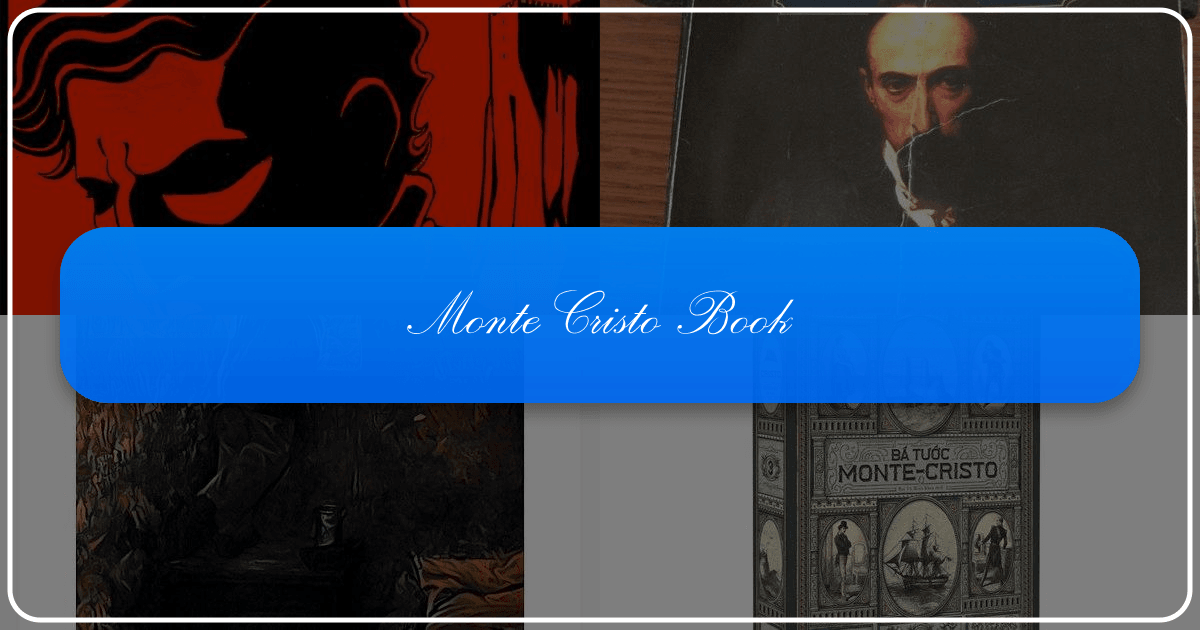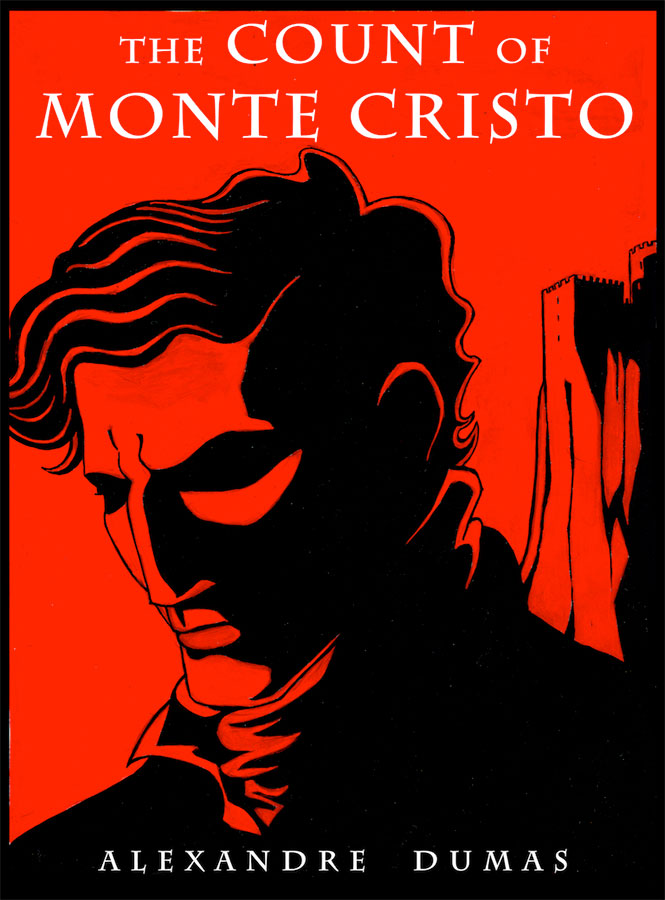The Count of Monte Cristo: A Deep Dive into Dumas' Masterpiece

Alexandre Dumas’s The Count of Monte Cristo stands as a towering achievement in adventure and historical fiction. Its enduring popularity, spanning centuries and countless adaptations, testifies to its compelling narrative and timeless themes. This exploration delves into the novel’s intricacies, examining its plot, characters, historical context, and lasting cultural impact, utilizing various lenses to illuminate its enduring appeal.
The Narrative Arc: From Wrongful Imprisonment to Calculated Revenge
The Count of Monte Cristo unfolds against the vibrant backdrop of 19th-century France, Italy, and the Mediterranean, specifically the period between 1815 and 1839. The story commences on the day Napoleon escapes from Elba, triggering the Hundred Days’ campaign, a pivotal historical event that profoundly influences the narrative’s trajectory. The novel masterfully weaves historical reality into its fictional tapestry, using the political climate as a catalyst for the protagonist’s suffering and subsequent quest for vengeance.

The tale centers on Edmond Dantès, a young, promising sailor, falsely accused of treason on the eve of his wedding. His incarceration in the grim Château d’If marks the beginning of his descent into despair and the subsequent transformation that defines his existence. The imprisonment, however, proves to be a crucible for Edmond. He forms a bond with Abbé Faria, a learned prisoner who not only becomes his mentor, providing an education in various disciplines but also reveals the location of a hidden treasure on the Isle of Monte Cristo.
Edmond’s escape, fueled by the newfound knowledge and wealth, sets the stage for the second act of the narrative. He metamorphoses into the enigmatic and powerful Count of Monte Cristo, seamlessly blending into Parisian high society, a guise under which he executes his meticulously planned and systematic revenge. The novel meticulously traces Edmond’s journey, showcasing his calculated strategies as he methodically targets those who wronged him: Fernand Mondego, Danglars, and Villefort. The intricate web of deceit, betrayal, and manipulation forms the cornerstone of the narrative’s dramatic tension.

The narrative is not solely defined by revenge, however. Dumas incorporates themes of hope, justice, mercy, and forgiveness, which temper the raw emotion of vengeance. The Count’s acts of benevolence, performed under different aliases, highlight a duality within the character. His ultimate redemption, or at least a softening of his vengeful heart, adds a layer of complexity and ambiguity to the tale, suggesting that true justice may extend beyond mere retribution. The novel’s conclusion, leaving the reader with the poignant phrase “all human wisdom is contained in these two words: ‘Wait and Hope’,” underscores the enduring power of patience and faith.
A Cast of Compelling Characters: Morality, Ambition, and Betrayal

Dumas populates his narrative with a richly diverse cast of characters, each possessing distinctive traits that contribute to the novel’s complexity. Edmond Dantès, the central protagonist, undergoes a profound transformation, evolving from a naive and optimistic youth to a cunning and vengeful nobleman. This internal struggle, marked by the constant conflict between his innate goodness and his thirst for revenge, is at the heart of his character arc.
His antagonists are equally compelling. Fernand Mondego, driven by jealousy and ambition, plots Dantès’s downfall. Danglars, consumed by envy and greed, readily participates in the conspiracy. Villefort, a magistrate driven by self-preservation, actively contributes to Edmond’s unjust imprisonment. Each antagonist’s motivations are explored, providing insight into their individual flaws and the consequences of their actions.
The supporting cast—Abbé Faria, Mercédès, Haydée, and others—provides a counterpoint to the central conflict. Abbé Faria represents wisdom, mentorship, and moral guidance. Mercédès’s unwavering love for Edmond underscores the profound impact of injustice and the enduring power of human connection. Haydée’s tragic past and her eventual love for the Count add further layers of emotional depth to the narrative. These characters highlight the moral complexity of the narrative and prevent it from becoming a simple tale of good versus evil.
Edmond Dantès and His Many Guises: A Study in Transformation
Edmond Dantès is not a static character; rather, he is a dynamic figure who undergoes significant changes throughout the novel. His initial innocence and naiveté are gradually eroded by the injustice he suffers, leading to a calculated and ruthless pursuit of revenge. This transformation is further emphasized by the multiple aliases he adopts—the Count of Monte Cristo, Abbé Busoni, Lord Wilmore, and others—each serving a specific purpose in his elaborate scheme. These guises allow him to infiltrate various levels of society, manipulate events, and remain elusive, while simultaneously demonstrating his adaptability and cunning. The shifting identities underscore his internal struggle, and the ultimate question of whether he can ever truly escape the shadow of his past.
The Historical Context: A Reflection of Post-Napoleonic France
The historical setting of The Count of Monte Cristo is not merely a backdrop; it is integral to the narrative’s fabric. The novel’s events unfold during the Bourbon Restoration and the subsequent reign of Louis-Philippe I, a period of significant political instability and social upheaval in France. The lingering effects of the Napoleonic Wars and the shifting power dynamics between royalists and Bonapartists provide a rich context for the plot. The false accusations against Edmond Dantès are rooted in the political tensions of the era, showcasing the vulnerability of individuals caught in the crossfire of ideological conflicts.
Dumas’s own life experiences, including his father’s military career under Napoleon, likely informed his depiction of the historical period and the complex political landscape of the time. The novel’s exploration of justice, betrayal, and ambition resonates deeply with the real-life political intrigues and societal shifts of post-Napoleonic France. The historical context is not merely a backdrop but adds layers of significance to the characters’ motivations and the narrative’s overall trajectory.
Cultural Impact and Adaptations: A Legacy of Enduring Popularity
The Count of Monte Cristo’s influence extends far beyond the pages of the novel. Its enduring popularity has led to a multitude of adaptations in various media, including films, television series, plays, and even manga. These adaptations demonstrate the novel’s enduring resonance with audiences across different cultures and generations. The story’s themes of revenge, justice, and redemption continue to captivate viewers, reflecting universal human experiences that transcend time and cultural boundaries.
Adaptations Across Media: A Testament to the Novel’s Versatility
The sheer number and variety of adaptations of The Count of Monte Cristo highlight its capacity to resonate with diverse audiences and inspire creative interpretations. From silent films to contemporary television series, the story has been reimagined time and again, often incorporating elements specific to the cultural context of the adaptation. The adaptations, while sometimes altering plot elements or character details, consistently retain the essence of Dumas’s original work – the tale of wrongful imprisonment, calculated revenge, and the moral complexities of justice. The continued adaptation across diverse mediums showcases the novel’s power to remain relevant and compelling to modern audiences.
Exploring Further: Themes, Literary Analysis, and Historical Research
A comprehensive understanding of The Count of Monte Cristo demands exploration beyond the basic plot summary. Further research could investigate the novel’s complex themes, delving into the nuances of justice versus vengeance, the corrupting influence of power, and the transformative potential of human connection. Literary analysis could examine Dumas’s narrative techniques, his use of suspense, and his character development. Further historical research could explore the real-life events and figures that may have inspired the novel’s plot and characters, providing a deeper understanding of the historical context that shaped Dumas’s masterpiece.
This exploration of The Count of Monte Cristo has aimed to highlight the novel’s enduring appeal and multifaceted layers. From its intricate plot to its memorable characters and its rich historical context, the novel continues to captivate and inspire, serving as a testament to the power of storytelling and the enduring relevance of its themes. Further investigation and critical analysis can only enrich one’s appreciation of Dumas’s literary legacy and the timeless qualities of this classic work.